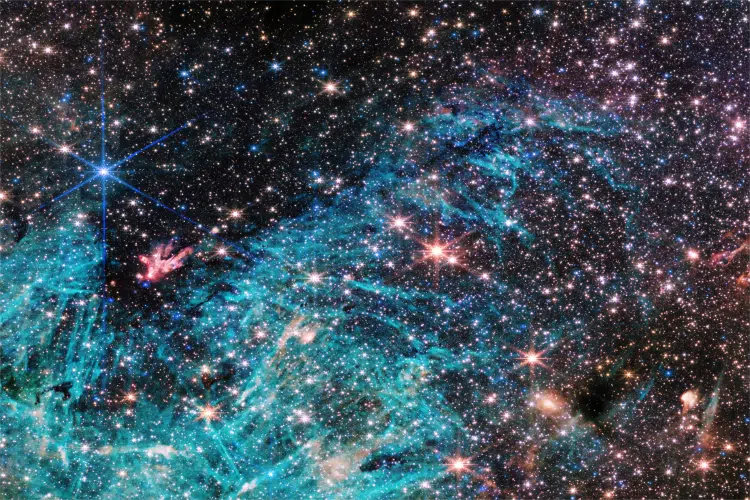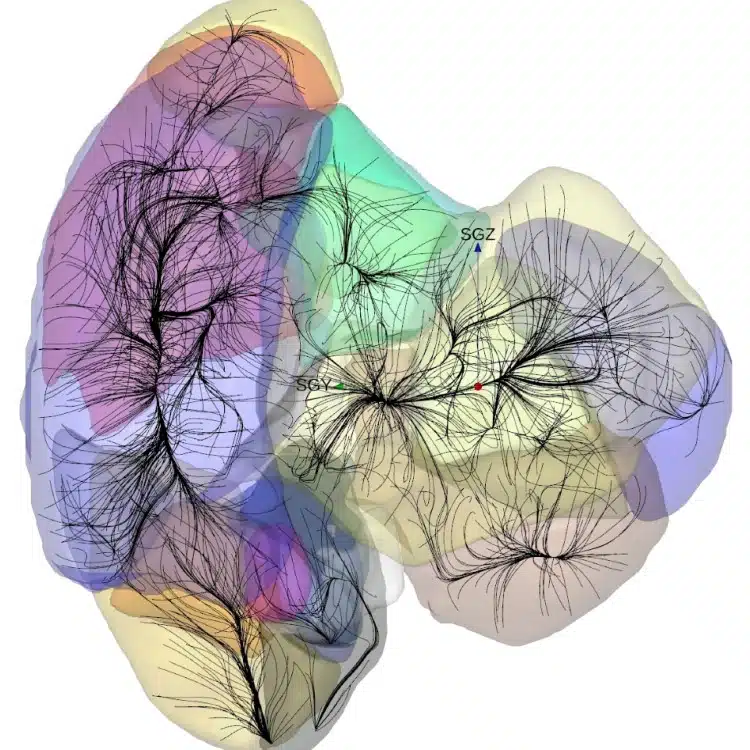Just as water flows within watersheds, galaxies flow within cosmic basins of attraction.
The discovery of these larger basins could fundamentally change our understanding of cosmic structure.
But just how can astronomers determine whether or not these enormous structures, called basins of attractions, exist?

The NIRCam (Near-Infrared Camera) instrument on NASA’s James Webb Space Telescope’s reveals a portion of the Milky Way. (Photo: NASA, ESA, CSA, STScI, and S. Crowe – University of Virginia)
They look at the motions of galaxies.
The team determined the location of these superstructures by evaluating the velocity of neighboring galaxies.
Galaxy motions converge into colored basins of attraction.

Galaxy motions converge into colored basins of attraction. The Milky Way is shown as the red dot. (Photo: University of Hawaii)
The Milky Way is shown as the red dot.